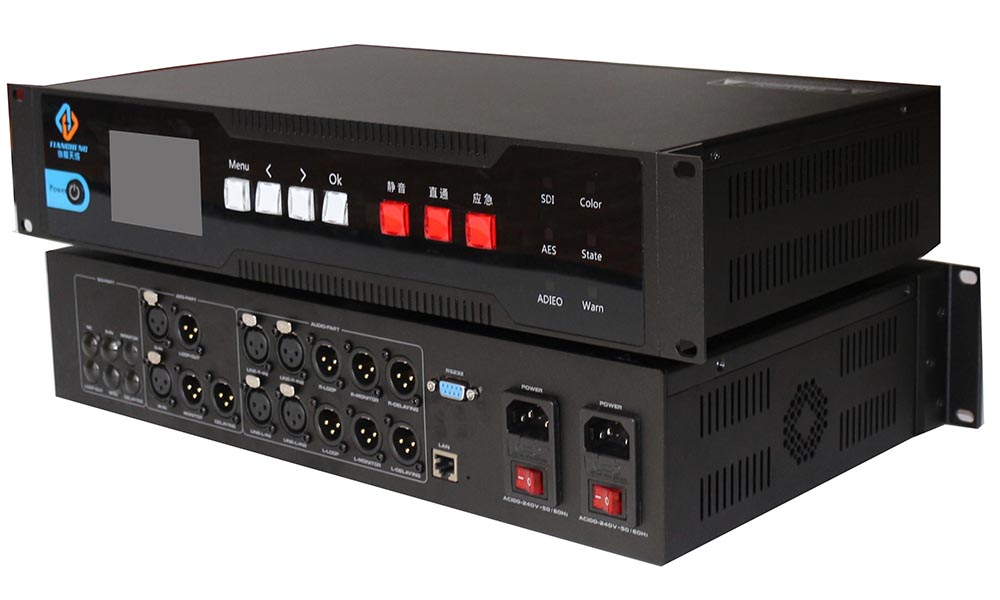1. What is an audio delay
“Audio Delayer” (hereinafter referred to as “delayer”), as its name implies, is an audio device that delays sound signals. In the traditional concept of use, it is still simple to delay the sound signal during long-distance sound reinforcement. In fact, the function of the delayer is not limited to this. Specifically, the function of the delayer can be divided into the following Five categories: 1. Used to improve sound clarity during long-distance sound reinforcement: The use of delayers in this area can be said to be the most commonly used. Generally, the outdoor sound reinforcement environment does not change with people’s wishes. However, there is often a phenomenon that the sound reinforcement area is relatively large and the sound reinforcement distance is relatively long.

The input sound signal first passes through the high-cut Circuit to cut off the frequency components above 10khz at 12db/per octave, imitating the loss of high-frequency components in the reflected sound, and making the reflected sound blurred. The adder is used to generate the echo string, and the digital delay circuit is used to adjust the size of the reflection space. On the one hand, it is sent to the mixer to mix with the direct sound, and on the other hand, a negative feedback branch is introduced to change the echo level through the adjustment of the feedback amount and the level change. . The high-cut circuit on the feedback branch can cut the frequency components above 6khz, and the cut-off slope is 6db/per octave. The signal is sent to the adder, and after the digital delay circuit, is sent to the mixer. On the other hand, it enters the negative feedback branch to form an echo string, which is mixed with the direct sound in the mixer, and then the output from the mixer is the belt Original sound with echo effect. In order to imitate the echoes in various environments, VLF modulation is added to the echo string, and the echoes in different environments are generated by changing the modulation depth, modulation waveform, and modulation rate. In order to reflect the echo in the complex environment, the delay time is scanned to make the delay time have certain fluctuations.

1. Correct the difference when multiple speakers occur in multiple frequency bands
Among the sound reinforcement equipment, there are many large-scale loudspeaker equipment. These loudspeakers have a common feature, that is, most of them adopt the design of multiple speakers to produce sound. The frequency responses of these speakers are mutually compensated in order to pursue a flat frequency response curve. . But this design has certain drawbacks.
2. Use delay to realize sound and image positioning
It is well known that the human ear has the function of distinguishing the sound position, especially the sound in the horizontal direction. The human ear can easily distinguish the direction of sound. This is because the distance between the two ears is more than ten centimeters apart, and there is a certain time difference and intensity difference when receiving sound signals. It is this difference that makes it easy for the human ear to distinguish the direction of the sound.
The research conclusion of the famous German scientist Hass Hass fully explained the influence of time delay on sound image localization, which is also known as the “Haas effect”, and there is also a “preconception” in the audio industry. Haas’s experiment proved that when two sound sources emit exactly the same sound, according to the difference in delay between one sound source and the other sound source, the experience of binaural listening is different, which can be divided into the following three situations illustrate.
1) Two sound sources emit exactly the same sound, and when the delay between one sound source and the other sound source is 5ms-35ms, the human ear can only perceive the existence of one sound source ahead, and the sound image localization is biased towards the one ahead. The location of the sound source, and the presence of a lagging sound source is not felt.
2) Two sound sources emit exactly the same sound. When the delay between one sound source and the other sound source is 30ms-50ms, the human ear can distinguish the existence of the two sound sources, but the sound image is still positioned in the advanced Sound source direction.
3) Two sound sources emit exactly the same sound, and when the delay between one sound source and the other sound source is greater than 50ms, the human ear can feel that the two sound sources exist at the same time, and the sound image is located on the two sound sources. s position. That is to say, when two identical signals are transmitted from two speakers, if a certain speaker is processed with a certain delay, then the sound image will be felt to be moving in the auditory sense, usually in a stereo sound reinforcement system, using The Haas effect delays certain speakers to achieve a perfect stereo effect.
3. Avoid emergencies in the live broadcast of radio stations
Audio delayers are also very common in the use of radio stations, especially in the process of live broadcasts that require a certain amount of delay processing. Due to the particularity of live broadcasts, there are often sudden incidents, such as signal interruption, noise signals, and so on. And these events are unpredictable. But after using the audio delay device, the signal heard by the audience has been processed in time, which greatly improves the safety and integrity of the program.